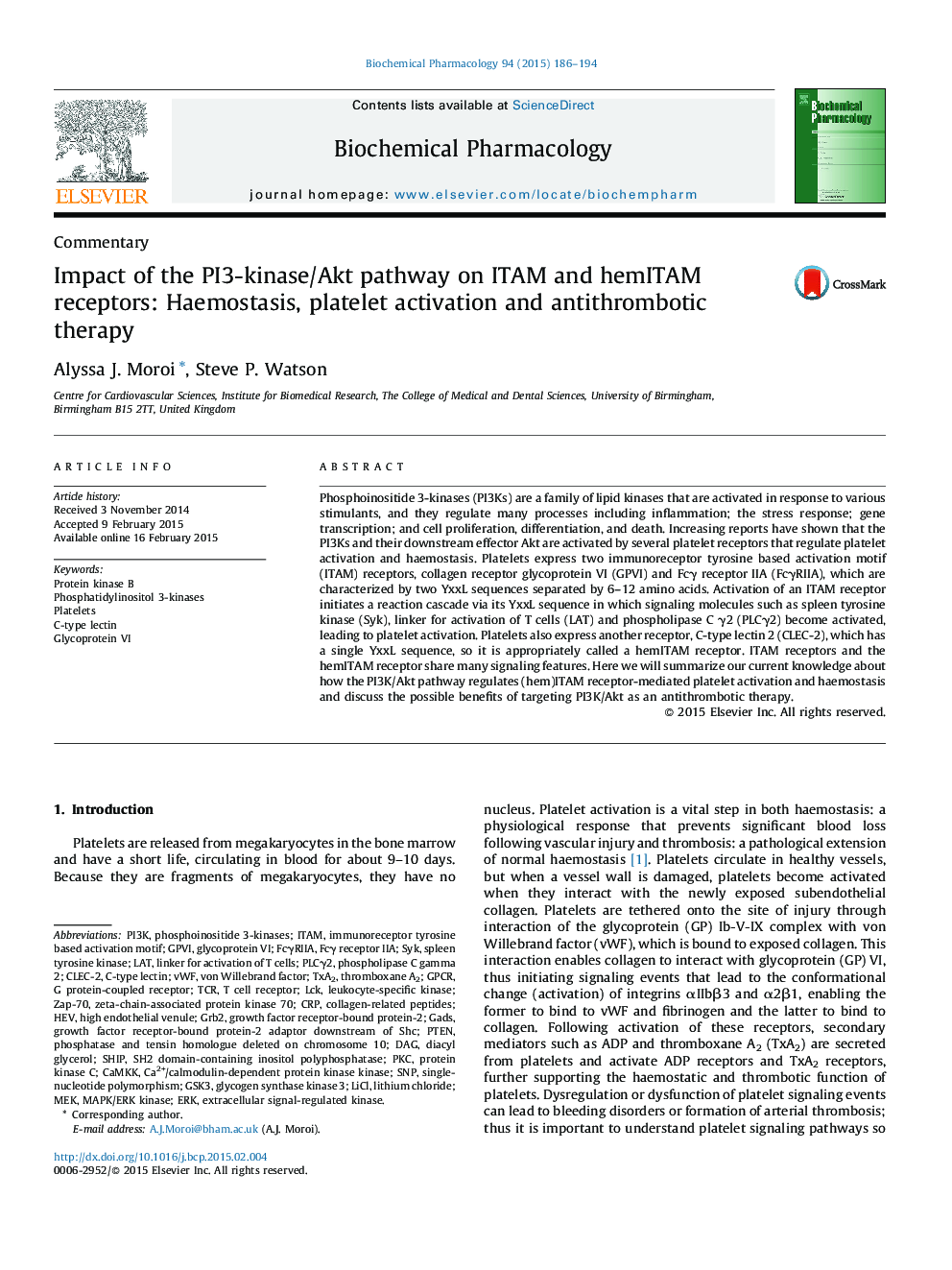| Article ID | Journal | Published Year | Pages | File Type |
|---|---|---|---|---|
| 2511962 | Biochemical Pharmacology | 2015 | 9 Pages |
Phosphoinositide 3-kinases (PI3Ks) are a family of lipid kinases that are activated in response to various stimulants, and they regulate many processes including inflammation; the stress response; gene transcription; and cell proliferation, differentiation, and death. Increasing reports have shown that the PI3Ks and their downstream effector Akt are activated by several platelet receptors that regulate platelet activation and haemostasis. Platelets express two immunoreceptor tyrosine based activation motif (ITAM) receptors, collagen receptor glycoprotein VI (GPVI) and Fcγ receptor IIA (FcγRIIA), which are characterized by two YxxL sequences separated by 6–12 amino acids. Activation of an ITAM receptor initiates a reaction cascade via its YxxL sequence in which signaling molecules such as spleen tyrosine kinase (Syk), linker for activation of T cells (LAT) and phospholipase C γ2 (PLCγ2) become activated, leading to platelet activation. Platelets also express another receptor, C-type lectin 2 (CLEC-2), which has a single YxxL sequence, so it is appropriately called a hemITAM receptor. ITAM receptors and the hemITAM receptor share many signaling features. Here we will summarize our current knowledge about how the PI3K/Akt pathway regulates (hem)ITAM receptor-mediated platelet activation and haemostasis and discuss the possible benefits of targeting PI3K/Akt as an antithrombotic therapy.
Graphical abstractFigure optionsDownload full-size imageDownload as PowerPoint slide
